|
It may still be summer, but the tease of fall is in the air. A smattering of leaves are beginning to float down from the deciduous trees, the sun is setting earlier in the evening and rising later in the morning. I’m hearing less hummingbird chatter, which means they have begun their migration south. This past week, daytime temperatures have been mild, with deliciously cool nights. All of this is a reminder that autumn is rapidly approaching. Just as the seasons shift, so too do our cravings at the table and in the glass. While red, white, and rosé wines can be enjoyed year-round, many wine lovers have seasonal favorites. As autumn and cool temps advance, red wines often take center stage, edging out the lighter wines that we enjoy in summer’s heat. Here are three red wines to welcome autumn. Domaine Bousquet Reserve Organic Malbec 2023 Domaine Bousquet has made frequent appearances on my website, and I’ve enjoyed reviewing their wines on numerous occasions. This family-owned estate is located in the Gualtallary Valley, high up in the Tupungato district of the Uco Valley in Argentina’s Mendoza region. It is Argentina’s largest producer and exporter of organically grown wines. To learn more about their vineyards and wines, click “Domaine Bousquet” in the Categories section on the right. This wine is a blend of 85% Malbec, 5% Merlot, 5% Syrah, and 5% Cabernet Sauvignon. These certified organically grown grapes are harvested from the estate’s best plots in the Uco Valley. This wine is aged 50% in 2nd-use 400L French oak barrels for six months, with the remaining in stainless steel and concrete tanks. Nose: Dark berries, plum, and spice, with a hint of floral and oak. Palate: Layered with plum, blackberry, raspberry, dark cherry, chocolate, and pepper, ending on a long, silky finish. Nicely balanced with soft tannins and good acidity. Alcohol: 14.5% SRP: $18 Pairing suggestions: Grilled meat, pasta, stews, seared tuna, and spicy Asian cuisine. Famiglia Cotarella Sodale Merlot Lazio IGT 2020 Famiglia Cotarella is family-owned business spanning three generations of grape growers and winemakers from Umbria, Italy. Today, sisters Dominga, Marta, and Enrica Cotarella control the family estates. Their mission is to further tie the company’s identity to its native terroir and the family name. Their portfolio includes classic Italian blends and single varietal expressions of Merlot and Sangiovese from Lazio, Umbria, and Montalcino. This wine is 100% Merlot. Grapes were hand-harvested from vineyards in the Lazio region. After fermentation, the wine was aged for nine months in neutral French oak barrels. Fined and lightly filtered before bottling, the finished wine was aged for several months in bottle before its release to market. Nose: Violets, red fruit, baking spice, and subtle hints of cherry. Palate: Round and smooth with notes of dark berries, plum, dark cherry, and spice. A touch of vanilla and cherry tobacco lingers on a long finish. Alcohol: 14.5% SRP: $25.99 Pairing suggestions: Roasts, game, poultry, mushroom risotto, and hearty stew.. Lázuli Cabernet Sauvignon 2017 Vina Aquitania is a partnership of four distinguished winemakers and vineyard owners. Bruno Prats and Paul Pontallier (RIP) of the Bordeaux region, Ghislain De Montgolfier of Champagne, and Felipe De Solminihac, a renowned oenologist in Chile. They produce limited quantities of Chilean wine inspired by the Bordeaux tradition. This wine is 100% Cabernet Sauvignon, hand-harvested from 25 to 30-year-old vines planted in Peñalolén, a commune bordering Santiago de Chile at an elevation of 2,300 feet in the Maipo Andes. The wine was aged for 16 months in French oak barrels and is named after Lapis Lazuli, the beautiful blue gemstone found in Chile. Nose: Lots of dark fruit, floral notes, jammy plum, and subtle hints of baking spice, earth, and herbs. Palate: Aromas segue onto the palate with blackberry and cherry tobacco. This is a balanced and complex wine with a playful amount of acidity. Alcohol: 14.5% SRP: $45 Pairing suggestions: Enjoy with roasted meat, venison, seared tuna, spicy cuisine, and dark chocolate desserts. What red wine will you pour as the leaves turn? Until next time…
Cheers! Penina To leave a comment or if you have an inquiry, please contact me at [email protected] Summertime brings with it beach and pool time, picnics, vacations, and lazing in the hammock. Unfortunately, heat waves and unbearable humidity can also accompany the summer months. One often hears the phrase “dog days of summer.” The origin of this phrase is related to the stars, not dogs wilting in the summer heat! Sirius is the brightest star in the night sky and part of the constellation Canis Majoris—the “Greater Dog.” The ancient Romans and Greeks believed that when the Dog Star, Sirius, appeared in the sky and occupied the same region as the sun, it created the hottest days of the year. They also believed it brought bad luck, drought, and chaos. The Romans called it “dies caniculares” or “days of the dog star.” For the ancient Romans, the dog days of summer were believed to occur from approximately July 24 to around August 24. Over time, the constellations have drifted, and the “dog days” dates have changed. According to the Old Farmer’s Almanac, the Dog Days are considered to be between July 3 and August 11 in the Northern Hemisphere. However, it seems that these days, heat and humidity may linger for a bit longer, regardless of Sirius’s position in the sky. Although one might tend to prefer white or rosé wines as the temps begin to climb, red wines should not be overlooked during the summer months. Many light-bodied to full-bodied reds are ideal for sipping outdoors while enjoying grilled fare. For instance, unoaked or lightly oaked red wines tend to be lighter and fruitier. Slightly chilling many red wines for no more than 30 minutes can enhance the flavors, minimize the focus on alcohol, and make the wine more refreshing. When choosing a wine to drink while outside on a hot day, I recommend staying below 14% ABV. (alcohol by volume) Alcohol is a diuretic that contributes to dehydration. And when combined with outside heat, which leads to sweating, one can become dehydrated quickly. Therefore, it is essential to drink water and stay hydrated! Here are two white and two red Italian wines to enjoy this summer or any time of the year. The Whites Bolla Soave Classico DOC 2023 Founded in 1883, Bolla winery is situated in the countryside of Valpolicella and produces classic Venetian wines. This wine is 85% Garganega and 15% Trebbiano di Soave. Grapes are sourced and handpicked from 15-to 25-year-old vines in the Soave Classico hills, where the soil is of volcanic origin. After fermentation in stainless steel vats, the wine is left on the fine lees at a low temperature until it is ready for blending. Nose: White blossoms, apple, tropical fruit and citrus. Palate: A dry white wine with lots of character. Silky texture with pineapple, melon, honeysuckle, and lemon curd. Light and refreshing! Alcohol: 13% SRP: $9.99 Pairing suggestions: Enjoy as an aperitif or with seafood, light pasta, risotto, or salads. La Scolca Gavi Dei Gavi Gold Edition DOCG 2021 La Scolca is located in the prestigious terroir of Rovereto di Gavi in the Piedmont region. They have been producing wine for over 105 years and are in their fifth generation, where tradition is combined with modernity. 100% Cortese grapes are sourced from the Gavi hills in vineyards with vines up to 60 years of age. Fermentation takes place in stainless steel tanks and rests on the lees until bottling. Nose: White flowers, green apple, almonds, citrus and minerality. Palate: A dry, crisp wine with fresh acidity and balanced notes of flint, almonds, honeydew, and white fruit. A hint of citrus teases the palate on the finish. Alcohol: 12% SRP: $16 Pairing suggestions: Perfect as an aperitif or served with appetizers, fish, seafood, white meat, risotto, or Asian cuisine. The Reds Sensi Sabbiato Bolgheri Rosso DOC 2022 Sensi’s family history started in Chianti in 1890 and then expanded to other areas in Tuscany. Currently, the winery is managed by the fourth generation, which produced its first Bolgheri DOC wine in 2007. The grapes for this wine are a blend of 60% Cabernet Sauvignon and 40% Merlot, sourced from Bolgheri and Livorno in sandy, mineral-rich soils near the Tyrrhenian coast in Tuscany. After fermentation, the wine aged for 12-14 months in French oak barriques, approximately 50% of which were new wood. Further aging took place in bottles. Nose: Dark berries, baking spice, croissants, a touch of herbs and earthy. Palate: Aromas segued onto the palate with notes of plum, dark cherry, and pomegranate, balanced with acidity and salinity. Dark fruit lingers on a long finish. Alcohol: 14% I’ve included this wine despite its 14% alcohol volume. It is a great addition to enjoy with barbecue fare. But save it for a cool summer day or evening, not a heat wave! SRP: $18 Pairing suggestions: Enjoy with your favorite grilled meat, seafood, white meat, or pasta and sauce. Tenuta Regaleali Lamùri Nero D’Avola Sicilia DOC 2020 Tasca Conti D’Almerita boasts over 200 years of winemaking history in Sicily, dating back to 1830. It remains family-owned and run by the Tasca family. They have five estates throughout Sicily, with Tenuta Regaleali considered the “mother estate” comprising 550 hectares in the highlands of central Sicily. In the Sicilian dialect, Lamùri means ‘love’ and represents the Tasca’s love for their native Nero d’Avola grape variety, estate-grown at some of the highest points in Sicily. This wine is 100% Nero d’Avola. After fermentation, the wine was aged for 12 months in 20% new and 80% 2nd and 3rd-year French oak barrels. Nose: Floral, dark cherry, berries, baking spice, herbs, and a hint of flint. Palate: Aromas spill onto the palate with soft tannins, berries infused with balsamic, and a savory finish of spice and acidity. Alcohol: 13% SRP: $19.99 Pairing suggestions: Grilled meat, chicken, game, seared tuna, pasta and red sauce, or pizza, Please remember that alcohol, in combination with high temperatures, can dehydrate us quickly, so be smart. Drinking plenty of water is essential when outdoors in sweltering heat, especially if you plan to consume alcohol! Until next time…
Cheers! Penina To leave a comment or if you have an inquiry, please contact me at [email protected] As most of you know by now, I drink white and red wines all year long. My palate and mood dictate what I drink, not the seasons. However, with the warmer weather finally here, the lighter wines tend to take preference, but not always! Sipping Pinot Grigio is a treat that is savored throughout every season in my home. To quote me from an article written in 2022, “Many, many years ago, when my taste buds started developing a fine appreciation for wine, Pinot Grigio was not high on my list of enjoyable wines. I felt it lacked personality. It wasn’t until several later that I tasted Pinot Grigio from the northeastern region of Italy for the first time and had an “aha” moment. So this was how Pinot Grigio was supposed to taste! I was hooked!” Pinot Grigio, aka Pinot Gris, is a white wine grape that thrives in a cool climate. The color of the skin ranges from dark purple to pink to grayish. (grigio means gray in Italian.) It is a dry, easy-drinking wine that is clean, fresh, and aromatic. Flavors range from zesty and straightforward to complex. Typical flavor profiles of this wine include but are not limited to floral notes, green apple, lime, lemon, white stone fruit, pear, honeysuckle, bitter almond, bright acidity, and minerality. Due to Pinot Grigio’s racy acidity, it’s a versatile companion to a variety of dishes. From seafood, especially oily fish, to shellfish, white meat, light pasta, salads, and vegetable risotto, it pairs beautifully. Or, enjoy it as an aperitif! I was recently offered a few Pinot Grigio samples to review, to which I replied, “Yes, please!” So, let’s dive in! Trentino Ventessa Pinot Grigio Vigneti delle Dolomiti IGT 2023 This wine is produced by Mezzacorona, located in Trentino in the Italian Alps. The winery, surrounded by the Adige River, has been crafting estate-grown wines since 1904. Ventessa is made without chemical alteration. After the grapes are hand-harvested, they are immediately crushed and undergo a very short cold maceration in the press. The grapes are then softly pressed. The musts are then fermented for eight days. The wines are kept on the yeasts in steel tanks and are naturally low in calories and alcohol. Nose: White flowers, peach, and melon. Palate: White stone fruit, honeydew melon, citrus, and a touch of minerality balanced with crisp acidity. A light and refreshing sip! Alcohol: 9% SRP: $10.99 Pairing suggestions: Enjoy as an aperitif, or Mezzacorona suggests pairing with delicate finger foods, shellfish, medium-mature cheeses, and baked & fried fish dishes. Veneto Pasqua Black Label Pinot Grigio delle Venezie DOC 2023 My “love affair” with Pasqua Wines continues with this Pinot Grigio. Their expressive and memorable wines always please my palate. This family-run business was founded in 1925 and is located in Verona. It is led by third-generation Pasqua brothers Riccardo and Alessandro. The company has complete control over approximately 741 acres of vineyards (1/3 is estate-owned), stretching from Lake Garda to Soave. After the grapes are harvested, fermentation takes place in steel tanks. 30% of the wine ends alcoholic fermentation in French oak barrels and continues aging in Tonneaux of second use for about 3 months. I love the glass stopper! Nose: Beautiful floral notes with white stone fruit, pear, toast, and a trace of vanilla. Palate: Aromas segue onto the palate with nuanced notes of apricot, white peach, and tropical fruit. Toasty flavors and vanilla linger on the finish. It is complex, balanced, and very satisfying. Alcohol: 12% SRP: $14.99 Pairing suggestions: Pasqua suggests fish appetizers, shellfish, clams, fish-based first courses, white meats, and sushi. Friuli Venezia-Giulia Livio Felluga Pinot Grigio DOC 2023 Founded in 1956 by Livio Felluga, one of the most respected producers in Friuli, this 500-acre estate has 370 acres of wine vineyards in the Collio and Colli Orientali del Friuli. Livio is renowned for his dedication to reviving high-quality viticulture in Friuli. Livio’s son, Andrea Felluga, now continues the family legacy of producing wines of distinction. Grapes for this wine were hand-picked. After fermentation in steel vats, the wine was kept on the lees for a few months to increase its complexity, creamy texture, and suitability for aging. Once bottled, it matured in temperature-controlled rooms. Nose: A bouquet of white flowers, peach, pear, apricot, and lemon.
Palate: This wine dances with aromas that segue onto the palate. Minerality, crisp acidity, and a savory/salty dance add to this wine’s complexity. Lemon tarts and sweet apples linger on a long and fruity finish. Alcohol: 13.5% SRP: $35 Pairing suggestions: Livio Felluga noted that this wine pairs beautifully with fish, shellfish, risotto, and baked vegetables. Remember, Pinot Grigio is not just a summer indulgence; it’s a year-round delight. Its crisp, clean taste is a perfect match for any season, whether it’s a warm summer day or a cozy winter evening. So, next time you are offered a glass of Pinot Grigio from northeastern Italy, say, “Yes, please!” Until next time… Cheers! Penina To leave a comment or if you have an inquiry, please contact me at [email protected] The historic San Felice Wine Estate is located in the heart of Chianti Classico in the commune of Castelnuovo Berardenga in Tuscany, Italy. The estate covers an area of more than 650 hectares. There are 150 hectares of wine vineyards, 80% of which is devoted to Sangiovese, the heart of their production. Their presence extends to the prestigious terroirs of Montalcino and Bolgheri as well. San Felice has approximately 17,000 olive trees, experimental plantations, and a hotel complex. Known for its innovation and research to rejuvenate and preserve nearly extinct ancient Tuscan grape varieties, San Felice has launched its new Vitiarium Collection. Vitiarium is a botanical Latin word, when translated to English, means “a nursery for vines - a work in progress." To quote San Felice, “This new line marks the beginning of a fresh chapter in a legacy that continues to evolve, accelerating the trajectory of this true icon of Tuscan wine. This journey now takes on a new identity: Vitiarium, a name that speaks to deep roots—those reaching back to the early 1980s, when ancient native grape varieties, nearly lost to time, were rediscovered and revived. The idea of preserving a forgotten heritage gave rise to an experimental vineyard dedicated to safeguarding Tuscan viticultural biodiversity, from which this new line draws its name. The collection includes Borgo Chianti Classico DOCG, Pugnitello Toscana IGT, In Avane Toscana IGT (a white wine), and La Pieve Chianti Classico DOCG Gran Selezione—each an authentic expression of a land where tradition and innovation meet.” Over the past several years, I have tasted and reviewed a selection of San Felice wines from their three Tuscan estates. They are all noteworthy wines, as are the following four new labels from the Vitiarium Collection. In Avane Chardonnay Toscana IGT 2023 The name “In Avane” comes from “Avenal,” the Etruscan name of the area, which encloses a trace of the ancient culture present in the territory of San Felice. The grapes for this Chardonnay are hand-harvested from the San Felice vineyard and fermented mostly in stainless steel and partly in oak barrels. It is then bottle-aged for a few months. Nose: Beautiful floral and citrus aromas with a slight hint of vanilla. Palate: White peaches, fresh acidity, and a surprisingly long finish with citrus and melon teasing the palate. Alcohol: 12.5% SRP: $33 Pairing suggestions: Enjoy as an aperitif or serve with appetizers, salads, seafood, and grilled chicken. Borgo Chianti Classico DOCG 2022 San Felice said, “Chianti Classico with a character that embodies the soul of San Felice. Sangiovese and Pugnitello come together to create a fragrant and vibrant wine, a faithful and authentic representation of our distinctive terroir.” The blend is primarily Sangiovese with a bit of Pugnitello. Grapes were vinified separately in stainless steel for two weeks and then aged for about 12 months in large Slavonian oak barrels before bottling. Nose: Floral notes, fresh dark fruit, berries, baking spice, and a touch of earth. Palate: Aromas spill onto the palate with cherry and forest floor. Spice and earth linger on the finish. Balanced, smooth and juicy! Alcohol: 13.5% SRP: $33 Pairing suggestions: Grilled meat, seared tuna, mushroom risotto, pizza, or hearty soups and stews. La Pieve Chianti Classico Gran Selezione DOCG 2021 From San Felice, “La Pieve Gran Selezione expresses the essence of San Felice's Chianti Classico. The Sangiovese, harvested from the finest company vineyards and vinified with care, produces a wine that represents the highest expression of the terroir. This is in line with San Felice's production philosophy, which has always sought to interpret the land through native grape varieties.” The predominant grape for this wine is Sangiovese, along with other native grapes. Fermentation occurs in steel tanks for 22 days, then malolactic fermentation and aging in wood for 24 months. It is bottle-aged for eight months before release. Nose: Floral notes of violet, dense red fruit, dark cherry, baking spice, anise, and cherry tobacco. Palate: Well-structured and silky smooth with aromas segueing onto the palate with dark cherry, vanilla, and hints of licorice lingering on a long finish. Alcohol: 14% SRP: $50 Pairing suggestions: Enjoy with a charcuterie board, roasted meats, stews, game, and Pappardelle al Cinghiale. Pugnitello Toscana IGT 2021 From San Felice, “Pugnitello is an ancient Tuscan native grape variety, whose name (little fist) refers to the shape of its cluster. Following its rediscovery, it has been researched in collaboration with the universities of Florence and Pisa in San Felice’s experimental vineyard. This wine is the fruit of 20 years of study and experimentation focused on saving native Tuscan grapes from extinction. Pugnitello is noteworthy for its distinctive characteristics, smoothness, and full-bodied concentration.” This 100% Pugnitello was fermented on the skins for 20 to 25 days, followed by malolactic fermentation, and then aged for 18 to 20 months in French oak barriques, followed by eight months of bottle aging. Nose: Jammy-rich fruit and lots of baking spice, especially cinnamon and clove. Earthy with deeper notes of dark berries and plum.
Palate: Beautifully rich, fruity, and smooth, with a sweet and savory dance. Perfectly balanced and well-structured. Hints of cherry, plum, cocoa, cedar, and smokey notes do a sexy tango on the palate. Run, don’t walk to scoop this one up. Alcohol: 13.5% SRP: $69 Pairing suggestions: Roasted and seared meats, hearty stews, game, fowl, and mushroom risotto. With Memorial Day weekend in full swing, these wines will pair with beach sunsets, BBQs, outdoor and indoor dinners, or relaxing with a good book or movie. And, of course, they are perfect to sip all year long! Until next time, Cheers! Penina To leave a comment or if you have an inquiry, please contact me at [email protected] Spring is in full swing, with flowers blooming against a background of vibrant green foliage bursting from trees. Birds are nesting, and butterflies are reaping the benefits of sweet floral nectar. It is the season of renewal and the promise of new beginnings. With warmer weather upon us, I believe we are all ready to embrace the outdoors. I certainly am! As most of my readers know, what type of wine I drink is not dictated by the weather, but what my palate is in the mood for. Billy Joel’s lyrics from the song “Scenes From An Italian Restaurant” ring true for me. “A bottle of white, a bottle of red Perhaps a bottle of rose instead” “A bottle of red, a bottle of white It all depends upon your appetite” So, with that in mind, here is a sampling of four wines I received, which will please your palate and pair well with spring, and all year round! Domaine Bousquet Reserve Organic Chardonnay 2023 Domaine Bousquet is no stranger to my website. I have reviewed and thoroughly enjoyed all of their wines throughout the years. This family-owned estate is in the Gualtallary Valley, high up in the Tupungato district of the Uco Valley in Argentina’s Mendoza region. This 100% Chardonnay comes from certified organic estate fruit and is hand-harvested from low-yield vineyards located at the foot of the Andes at an elevation of 4000 plus feet. 50% of the wine is fermented in oak for 15 days, and the other 50% in tanks. The wine is aged for six months in 3rd use French oak barrels on the lees for a Burgundian style. Nose: Lovely floral and tropical notes, with apples, lime, freshly baked bread, and a hint of vanilla. Palate: Creamy mouth-feel with beautiful acidity, oak aromas transcend on the palate with pear and tropical notes of pineapple and pink grapefruit. Oak and acidity persist on a long and delicious finish. Alcohol: 13.5% SRP: $18 Pairing suggestions: Enjoy as an aperitif or with seafood, salads, cream-based pasta, mushroom risotto, or cheese. Herzog Lineage Pinot Noir Clarksburg 2023 Herzog Wine Cellars has a long family history of winemaking that spans nine generations. From Europe to New York to the vineyards of California, the Herzog family gave rise to the American kosher wine industry, including premium kosher winemaking in California. Today they have eight brands of wine, one of which is the Lineage brand. This 100% Pinot Noir is harvested from vineyards in Clarksburg, CA. Try as I might, I could not find any technical data or the aging process of this wine. Nose: Cherries, pomegranate, cocoa, and baking spice. Palate: Silky mouth-feel with cherries, strawberry, earthy, and a hint of baking spice lingering on the finish. Alcohol: 13% SRP: $20 Pairing suggestions: Roasted leg of lamb, duck with cherry glaze, grilled portobello burgers, or seared tuna. Attems Pinot Grigio Ramato Friuli DOC This wine is produced by Attems, a historic estate located in Friuli, in northeast Italy. In 2000, the estate was sold to the Marchese Vittorio Frescobaldi. Pinot Grigio, aka Pinot Gris, is a white wine grape that thrives in a cool climate. The vineyards for this grape are situated in the middle area of the property, known as “manine” or “little hands” which is a primarily flat area set between Collio and Isonzo. This 100% Pinot Grigio gets its coppery/coral color from slight contact of about ten hours with the purple skins before pressing and fermenting. Following fermentation, the wine rested for four months on noble lees. Nose: White fruit, melon, cherry, citrus, and wildflowers. Palate: Crisp fruit with nice acidity, pink grapefruit, melon, cherry pie, and minerality lingering on the finish. I love the dance between tart and juicy. Alcohol: 12.5% SRP: $20 Pairing suggestions: Seafood, goat cheese wrapped in prosciutto, cream-based pasta, grilled veggies, or enjoy as an aperitif. Darom by Yatir Cabernet Sauvignon 2023 Yatir Winery, founded in 2000, is located at the southern tip of the Judean Hills, and built at the foot of the Israelite Tel Arad Fort (an archeological site) in the heart of the Negev desert. The vineyards of the Yatir Forest are just 10 minutes away. Vineyards are planted at an altitude of up to 900 meters above sea level and are dispersed throughout different locations in the forest, each with its own distinct feature. The dry desert climate and cool nights contribute to producing exceptional wine grapes. The grape blend for this wine is 85% Cabernet Sauvignon, 10% Petit Syrah, and 5% Shiraz. Grapes are hand-harvested; the wine is aged for eight months in small oak barrels. Nose: Dark fruit, cherry, baking spice, forest floor, and a hint of violet.
Palate: Rich and fruit-forward with lots of berries, cherry, spice, earthy, and slate. Alcohol: 13% SRP: $35 Pairing suggestions: Prime ribs, Mediterranean cuisine, risotto, and chocolate desserts. Whatever the season, occasion, or “just because” moment, these wines are price-approachable, and your palate will thank you! “A bottle of red, and a bottle of white Whatever kind of mood you're in tonight” Billy Joel Until next time… Cheers! Penina To leave a comment or if you have an inquiry, please contact me at [email protected] As the snow falls on this wintry day, my thoughts drift to the salty scent of the ocean, sand between my toes, and a glass of rosé in hand. Although I may not be able to indulge my yearnings for the seaside right now, a glass of wine is definitely within my reach! Here are a few expressive Italian wines that should be on your radar. They just might transport you to your place of bliss! The first two wines are samples I received recently. Tenuta Ammiraglia Alìe Toscana IGT 2021 This delicious rosé is produced by Marchesi dé Frescobaldi winery, which has numerous estates located throughout Tuscany. The grapes for this blend of Syrah and Vermentino are harvested from vineyards in the heart of the Maremma, on hills bordering the nearby Tyrrhenian coast, which boasts abundant sun and sea breezes. This wine is appropriately named after the Greek sea nymph goddess, Alie. After fermentation in steel tanks, the wine is aged for three months on fine lees. Nose: Lovely floral notes, citrus, wild strawberries, herbs, and a whiff of minerality. Palate: This wine is fresh, juicy, and crisp, with aromas segueing onto the palate and balancing well with sapidity. Pink grapefruit and herbs linger on a long finish. Alcohol: 12% SRP: $20.00 Jermann Pinot Grigio Ramât 2022 Friuli DOC Jermann was founded in 1881 by Anton Jermann, who moved from his native Austria to set up roots in Friuli. Since the 1970s, his great-grandson Silvio Jermann has carried on the tradition of wine-making and taken the company to worldwide recognition. This 100% Pinot Grigio is a white wine with a slightly copper hue due to a five-hour maceration on the skins before fermentation in stainless steel. The concept is to maximize aromas, not extract color. Aging is six months on lees, also done in stainless steel. Nose: White flowers, pear, apricot, apple, lemon zest, herbs Palate: Aromas spill onto the palate with fresh and vibrant notes. Sapidity and peaches linger on the finish. Alcohol: 13% SRP: $39.99 Pasqua “11 Minutes” Rosé Trevenezie IGT 2023 When I think of Italian rosé, this particular wine never disappoints. I always have a bottle of “11 Minutes” chilling in my refrigerator. And this is not my first review of it! This family-run business was founded in 1925. It is located in Verona, Italy, and is led by third-generation Pasqua brothers Riccardo and Alessandro. The company has complete control over approximately 741 acres of vineyards (1/3 is estate-owned), stretching from Lake Garda to Soave. “11 Minutes” is a unique blend of sustainably grown grapes sourced from Lake Garda. The blend is 50% Corvina, 25% Trebbiano di Lugana, 15% Syrah, and 10% Carménère. It is called “11 Minutes” because after the harvest, the grapes are gently pressed, and with only 11 minutes of skin contact, the most noteworthy qualities of the grapes are extracted, and the color is obtained. The bottle is an unusual and eye-catching oval shape, with an alluring photo of Lesbia seen through the front label. Nose: Tantalizing floral notes, red berries, citrus, and a hint of herbs.
Palate: This is a fresh and inviting rosé with wild strawberries, spice, vibrant acidity, and a touch of pink grapefruit on the finish. Alcohol: 12.5% SRP: $18.99 Pairing suggestions for the above wines: Enjoy as an aperitif or serve with grilled fish, seafood, risotto, or salads. The whimsical cookies in the photos were made by Bedford Village Pastry, located in the heart of Bedford Village, NY. Next time you are in the area, check out their tantalizing and creative desserts. Until next time… Cheers! Penina To leave a comment or if you have an inquiry, please contact me at [email protected] The Basics Vermouth is a fortified wine infused with aromatic botanicals such as herbs, spices, fruit, and sometimes vegetables. It is produced worldwide, and each producer has a unique recipe, a closely guarded secret! The styles of vermouth range from dry to extra dry and sweet. The colors can be white, red, amber, or rosé. Vermouth is quite versatile, and depending on the style, it can be enjoyed as an aperitivo, served over ice, with a dash of soda, added to a cocktail recipe, or used in cooking. According to the European Union, the product must be 75% wine to be considered vermouth. Vermouth Di Torino PGI Vermouth Di Torino PGI (IGP) is considered one of Italy’s most famous aromatized wines. It is a specific style of vermouth. The key ingredients are the herbs belonging to the genus Artemisia (wormwood), which must be grown, harvested, and produced in Piedmont, northeast Italy. Only specific Italian grape varieties are permissible. Torino (Turin) is located at the foothills of the Alps, where the terroir is conducive to growing grapes and botanicals. Vermouth has been produced here for over 300 years. Consorzio del Vermouth di Torino states that this vermouth must be bottled between 16% and 22% abv. Specific sugar levels apply depending on whether the vermouth is dry, extra dry, or sweet. An extensive range of aromas and flavors exist contingent on the color and sweetness level. 9diDante Vermouth I received two bottles of 9diDante vermouth to taste and review. Alex Quziel founded Kaliro Spirits in 2019 and, in 2021, introduced their first brand, 9diDante Vermouth di Torino Superiore, inspired by Dante’s Divine Comedy. Alex said, “It delivers a bold and sinful experience that pushes the traditional boundaries of its category. Making vermouth is easy. Making great vermouth entails a lifetime of dedication and expertise. Luckily, I knew where to find it.” Enter, Mario Baralis. Mario Baralis is one of the most iconic enologists and Master Blenders in Piedmont who had been retired for over twenty years. After meeting Alex in a chance encounter, he was intrigued by Alex’s passion for vermouth. Mario came out of retirement to mentor Alex and pass on a lifetime of knowledge and experience. The vermouths are made at the historic Dr. M. Montanaro distillery near Alba. Alex said that the vermouths are “wine-first” vermouths, with the botanicals designed to enhance the wine content rather than camouflage it.” 9diDante is blended exclusively with Piemonte DOC wines. Each bottle is made with 27 botanicals, with the first nine listed on the back of each bottle symbolizing each stage of Dante’s journey into hell and then nine terraces in purgatory before reaching paradise. Hence, the nine circles on the front of each bottle. Alex said, “Nine of the 27 botanicals were selected for their historical symbolism, guiding us through the nine circles of hell in Dante’s Divine Comedy.” After perusing the botanicals listed on both bottles, I found a botanical in each that prohibited me from sampling the vermouth. I have life-threatening allergies to cumin and coriander. So, I decided to defer to a few eager volunteers to be my tastebuds and who are not wine/spirits writers. What could be more perfect than having a consumer give their opinion of the products? Right? I gathered their comments and observations for each wine listed below. The comments are in no particular order. Inferno Rosso Vermouth di Torino Superiore IGP “To craft our Inferno Rosso Vermouth, we use an equal blend of Dolcetto red and Cortese white wines, allowing us to obtain our charismatic ruby red color naturally and avoiding the use of caramel for coloration. It is an original recipe inspired by Dante’s Divine Comedy, that will take you on a journey through the poet’s nine circles of hell. Giving birth to a philosophy that puts quality Piedmont wines at the heart of its vermouths.” Nose: Cherry, orange, vanilla, creamsicle, basil, raspberry, and fennel. Palate: Orange marmalade, herbal, red berries, sweet and bitter, dark chocolate, and warm & spicy. ABV: 17.5% SRP: $33 Purgatorio Extra Dry Vermouth di Torino Superiore IGP “The challenge is to maintain the true character of the wines while balancing the botanicals. Think of wine as the first and last botanical. It’s a lot more than just a base.” – Alex Ouziel, 9diDANTE co-creator The wine for this vermouth is 100% Ameis D.O.C., Piemonte’s prized wine. “Arneis” means “mischievous” or “reckless” in the local Piedmontese dialect. The name is derived from the fact that it is notoriously difficult to grow, to the point that it was on the verge of extinction until a little over a decade ago. Type: Extra Dry Nose: Pear, apple, flowers, citrus, lovely fragrance. Palate: Lemon, dried herbs, apricots, thyme, mint, very refreshing. orange peel. Alcohol: 18% SRP: $35 My “tasting panel” enjoyed both vermouths immensely and can’t wait to sip neat, over ice with an orange peel twist and experiment with cocktails. The above wines are best stored in the fridge and consumed within six months. Inferno will keep its flavor for up to six times longer than some other well-known vermouths, mainly because of the quality of Piedmont wine and the inclusion of a herb that serves as a preservative (a trade secret!) Until next time…
Cheers! Penina To leave a comment or if you have an inquiry, please contact me at [email protected] A few months ago, I had the pleasure of spending virtual time with Serena Gusmeri, winemaker for Vecchie Terre di Montefili, located in the captivating Tuscan hills of Chianti Classico. The estate is in the upper reaches of Panzano and is the first consolidated district for organic wine production in Italy. Ninety percent of Panzano’s vineyards are grown according to the criteria of organic viticulture. In the year 2000, Montefili became part of this organic district. Vecchie Terre di Montefili sits on a hill at 1770 feet with commanding views and vineyards between 1570 and 1770 feet above sea level. In the 1970s, the Acuti family planted vineyards here that eventually became Vecchie Terre di Montefili. The estate was acquired in 2015 by three American investors, Nicola Marzovilla, Frank Bynum, and Tom Peck Jr., whose vision and commitment are to sustainability and biodiversity, while preserving the land’s sanctity. Together with winemaker Serena Gusmeri, they are achieving this goal. The estate has 12.5 hectares of vineyards, of which 11 hectares are dedicated to Sangiovese focusing on low-yielding vines. Galestro, alberese marl, and quartz soils, and Montefili’s micro-climate are exceptional for winemaking.“Each plot is grown and vinified individually to allow its fruit to express its full potential.” Serena Gusmeri has been with Vecchie Terre Di Montefili since 2014. Although a trained winemaker, she said, “ I consider myself more of an agronomist.” Serena grew up at the foot of the Alps. Since childhood, she had a deep connection with nature, cultivating a vegetable garden and tending to chickens. She received her master’s degree in viticulture and then spent time working in Campania and Franciacorta. She said, “These experiences taught me the importance of how unique each vineyard is shaped by the surrounding ecosystem, and our wines express the ecosystem of the vineyards.” Her approach to winemaking “is soft,” with minimal intervention, allowing the grape to dictate what it needs. At Vecchie Terre di Montefili, they collaborate with scientists and botanists from Vite Nova Vine Wellness to undertake a multi-year scientific project to monitor and improve the health of their vineyards. Through regular flora and microfauna sampling, they ensure their activities enhance the ecosystem rather than deplete it. In 2022, they earned the Diversity Ark certification, registered with EUIPO, and were certified by CSQA. This certification emphasizes soil biodiversity and environmental respect, employing a holistic approach to agriculture. Serena guided us through a tasting of five of the estate's wines, all of which are 100% Sangiovese. Chianti Classico 2020 DOCG
This Sangiovese was harvested from the youngest vineyard, which has clay and limestone soil at an altitude of 1640 ft. The wine was barrel-aged a minimum of 15 months and then bottle-aged for a minimum of nine months. Nose: Ripe red fruit with notes of cherry, pomegranate, and baking spice. Palate: Fresh and fruity with dark cherry and fennel. Integrated tannins with baking spice lingering on a medium finish. Serena said, “Due to its high acidity, it must age longer in the barrel.” Alcohol: 14% SRP: $35 Chianti Classico Gran Selezione 2019 DOCG This Sangiovese was harvested from two different vineyards planted in the mid-1980s. The vineyards have Alberese soil and are at 1640 ft altitude. The wine was barrel-aged for 24 months and then bottle-aged for a minimum of 12 months. Nose: Complex aromas of cherry, plum, a hint of forest floor, spice, and herbs. Palate: Fresh and well balanced with silky tannins, earthy notes, plum, sour cherry, baking spice, and a long and juicy finish. Alcohol: 14% SRP: $72 Vigna Vecchia Toscana 2019 IGT The grapes for this Sangiovese were harvested from a 43-year-old vineyard on 0.50 hectares, discovered in 1981. The soil is Alberese, limestone, and marl. The wine was barrel-aged for 26 months and then bottle-aged for a minimum of 12 months. Serena said, “The 2019 year is a nice, elegant vintage.” Nose: Floral, cherry, spice, and a hint of forest floor. Palate: Vibrant with acidity, delicate, and structured, this wine’s aromas segue onto the palate with notes of plum, pepper, herbs, and sour cherry lingering on a savory finish. Yum! Alcohol: 14% SRP: $150 Vigna nel Bosco Toscana 2019 IGT Sangiovese grapes were harvested from a careful selection of the highest vineyard at an altitude of 1750 ft. with Alberese, limestone, and marl soil. The wine was barrel-aged for 26 months and then bottle-aged for a minimum of 12 months. This is a limited edition, which was previewed at Vinitaly 2024. Nose: Floral, ripe-red fruit, cherries, musk, and baking spice. Palate: Rich and complex structure with cherries, plum, pomegranate, and a hint of minerality. A bright and lengthy finish that begs for another sip. Alcohol: 14.5% SRP: $150 Anfiteatro Toscana 2019 IGT This wine is the flagship of the estate. Grapes are sourced from the historic Anfiteatro single vineyard planted in 1975. It is the oldest vineyard at Montefili and “represents the heart and soul of the estate.” The vineyard sits at 1640 ft with Galestro, sandstone, and quartz soil. The wine is barrel-aged for 28 months and then bottle-aged for a minimum of 12 months. Nose: Dried violets, red and black fruit, earthy, baking spice, and a hint of espresso. Palate: A beautiful expression of Sangiovese with smooth tannins, cherry, fig, plum, orange zest. and baking spice that dance on your palate. The finish is long and graceful. Alcohol: 14.5% SRP: $160 These wines pair well with mature cheese, antipasto, roasted meats, game, rich tomato-based pasta dishes, porcini risotto, or grilled vegetables. I used my Coravin on all of the samples and look forward to revisiting them in a few years. Until next time… Cheers! Penina To leave a comment or if you have an inquiry, please contact me at [email protected] Since 1925, the Marenco family has been producing wine. It began with Michele Marenco, whose dream was to make wine from his vineyard in the heart of the Bagnario Valley, situated in Strevi, in southern Piedmont, and part of the Monferrato wine region in northwestern Italy. Michele’s son, Giuseppe Marenco, who understood the territory’s potential, followed in his father's footsteps and continued to make quality wine from indigenous grapes. He built the winery in 1956, located in Strevi, and acquired the best land he could find to grow grapes. Today, Giuseppe’s daughters, Michela with her husband Giovanni Costa, Patrizia (winemaker), and Doretta, carry on the family tradition with passion, enthusiasm, and dedication. They supervise and control every step of the production process, from grape to glass. The Marenco family presides over 160 acres of vineyards, focused on practicing sustainability while maintaining traditional growing systems in the vineyard and optimizing the quality of the grapes. In order to help maintain quality control, all grapes are harvested by hand. They grow Moscato, Barbera, Brochetto, and other indigenous grapes from Monferrato, with vineyards in Strevi, Cassine, and Fontanile Castel Boglione. I recently received a tasty selection of some of their still wines. Carialoso Monferrato Bianco DOC 2020 This wine is made with 100% Caricalasino, an ancient local variety that Patrizia Marenco rediscovered in the Strevi area and reproduced, beginning with 3,000 plants. Also known as white Barbera, the name Caricalasino means “load up the donkey” in Italian, and is a nod to the past when donkeys were the only means of transporting the grapes from hilly vineyards to the wineries. Usually blended with other grapes, Marenco was the first winery in Italy to produce a monovarietal wine. The first vintage was in 1996. “Carialoso” is the name of the grape in the Piemontese dialect. This wine was aged six months in stainless steel tanks and Oak barrels and then bottle-aged for three months prior to release. Nose: Beautiful aromas of white flowers, white stone fruit, herbs, citrus, and minerality. Palate: Fresh and inviting with vibrant acidity, sapidity, peach, apricot, and a hint of citrus, with zest and pepper on the finish. Alcohol: 12.5% SRP: $24.99 Pairing suggestions: Grilled white meat, seared tuna, porcini risotto or sip as an aperitif. Albarossa Piemonte DOC 2021 The Albarossa grape is a cross between Nebbiolo and Barbera, two main Piedmont grapes. Albarossa was developed in 1938 by Italian enologist Professor Giovanni Dalmasso. However, it wasn’t until 2001 that Albarossa was recognized as a quality grape of Piedmont, which can now be used in Monferrato Rosso DOC. This 100% Albarossa was harvested from the vineyard in the Strevi hills. After fermentation in stainless steel tanks, the wine is aged 18 months in large Oak barrels. It is then bottle-aged for six months before release. Nose: Violets, red fruit, baking spice, herbs, and cherry pie, Palate: Well structured, lively, and balanced with soft tannins and acidity. Lush notes of red fruit, plum, cherry, anise, and warm, spicy herbs and pepper. Alcohol: 14.5% SRP: $29.99 Pairing suggestions: Roasted or grilled red and white meats, stews, aged cheese, and charcuterie. Bassina Barbera D’Asti DOCG 2022 This wine takes its name from the Cascina Bassina, a farm in Fontanile (Asti). "Bassina.” short in Italian, was the nickname given to the lady who originally owned the Cascina. She understood the potential of Barbera in this area and began planting Barbera grapes on the best exposed sides of the hills. Barbera is the most widely planted grape in Piedmont. It is a juicy, fruit-forward wine. The grapes for this 100% Barbera were sourced from Bassina farm vineyard in Fontanile. After fermentation in stainless steel tanks, the wine was aged in concrete vats for nine months and then bottle-aged for three months. Nose: Floral, fresh red fruit, baking spice, and balsamic.
Palate: Aromas segue onto thepalate with bright, ripe berries, spice, sour cherry and a hint of dried plum. Alcohol: 14% SRP: $20.99 Pairing suggestions: Appetizers, pasta, grilled meat, chicken, and simple fish dishes. The logo of the ducks on the bottle label was inspired by the wild ducks that populate the lake on the Bassina Estate. Until next time… Cheers! Penina To leave a comment or if you have an inquiry, please contact me at [email protected] Labor Day has come and gone, and we have flipped the calendar page to September. However, summer isn’t officially over until September 22nd. We still have more beach days, picnics, grilling, outdoor concerts, and summer sunsets to enjoy! With that in mind, here are four wines that will take you through the end of summer, into the fall, and even winter! Moser 51.151 Trentodoc Brut Sparkling Wine NV Moser Winery, located in Trentino, Italy, was established in 1979 by Diego and Francesco Moser. Today, the winery is run by third-generation Carlo and Matteo, who combine family traditions with innovative and modern winemaking techniques. Moser winery sits among the Dolomites in the Trentodoc appellation, with vineyards benefiting from micro-climates and diurnal variations. This sparkling wine is produced in the Metodo Classico method, with 100% Chardonnay grapes grown on limestone soils in the Trento DOC Bianco appellation. Secondary fermentation and aging occur in bottle for 15 months on the lees. Nose: Floral, apples, citrus zest, white stone fruit, and baked croissant. Palate: A crisp and lively wine with fine perlage and notes of minerality, sapidity, and a touch of lemon zest on the finish. Alcohol: 12.5% SRP: $23 Pairing suggestions: Enjoy as an aperitif or with light appetizers, seafood, mushroom risotto, and dessert. Bolla Pinot Grigio Delle Venezie DOC 2023 Bolla Winery was founded in 1883 by Alberto Bolla in Soave. In 1931, he opened a winery in Pedemonte, a town in the province of Vicenza, Veneto, Italy. And in 2006, Gruppo Italiano Vini purchased the company. In 2016, Pinot Grigio attained DOC status in the geographical area of Veneto, Friuli-Venezia Giulia, and Trentino for the production of Pinot Grigio Delle Venezie DOC. The DOC Delle Venezie covers almost 28 thousand hectares of vineyards, encompassing the entire northeast area of Italy! The grapes for this 100% Pinot Grigio are sourced from hillside vineyards in Delle Venezie. Nose: White stone fruit, citrus, green apple, and melon. Palate: Light with crisp acidity, minerality, and hints of melon and peach lingering on the finish. Alcohol: 12% SRP: $11.99 Pairing suggestions: Enjoy as an aperitif or with seafood (especially oily fish) or shellfish. Also, white meat, light pasta, salads, and vegetable risotto pair nicely. Avivo Rosé Wine 2023 Avivo Wines is led by Ridgely Evers, Founder & CEO, and Daniel Fitzgerald, Director of Winemaking and owner. Their mission and goal is to make “clean wines.” They are committed to transparency and regenerative agriculture that reaches beyond sustainability in the vineyard and winery. In addition, AVIVO packages its wines in lightweight glass and uses Nomacorc Ocean corks made from recycled marine plastic waste. The blend for this rosé is 95% Sangiovese and 5% Syrah. The grapes are sourced from Ledbetter Family Vineyards in Lodi, CA. Fermentation took place in neutral oak and was aged in neutral French oak barrels for five months. Nose: Floral notes, red berries, vanilla, and a dash of citrus. Palate: Expressive! Dry, racy acidity, raspberry, melon, and a touch of cherry and pepper on the finish. Oh my! Alcohol: 12.8% SRP: $24 Pairing suggestions: Enjoy as an aperitif or with appetizers, seafood, crab quiche, light pasta, or grilled chicken. San Pedro 1865 Selected Vineyards Carmenère 2019 Viña San Pedro is situated in Maule Valley, Chile. It was founded in 1865, hence the name of the wine. Today, it is one of the largest and oldest exporters of Chilean wine. The grapes for this 100% Carmenère were sourced from San Pedro’s vineyards in Pencahue in the Maule Valley, and production took place at their Molina Winery in the Curicó Valley, 200 km south of Santiago. After fermentation, the wine was aged 12 months in French oak barrels (90%) and American oak (10%). 20% of the barrels were new. Nose: Intoxicating notes of dark fruit, cherry, baking spice, herbs, and pepper. Palate: Smooth tannins, rich and savory, with juicy blackberry and cherry leading the parade, followed by a hint of plum and a grand finale of cherry fusing with subtle herbs and pepper on a long finish. Alcohol: 14.5 % SRP: $20 Pairing suggestions: Get the grill going and enjoy this wine with seared tuna, steak, and fowl. Or serve with hearty stews, pasta, charcuterie, or cheese boards. Cheers to embracing the last few weeks of summer and looking forward to a stellar autumn! Until next time…
Cheers! Penina To leave a comment or if you have an inquiry, please contact me at [email protected] |
Categories
All
|
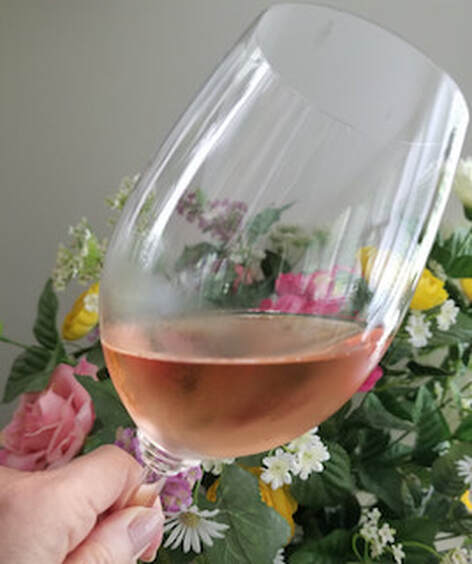
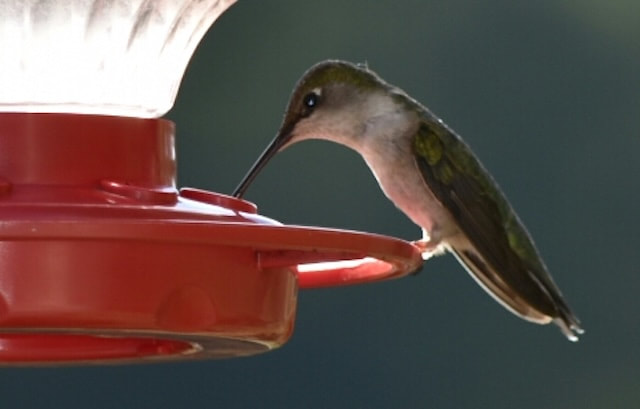
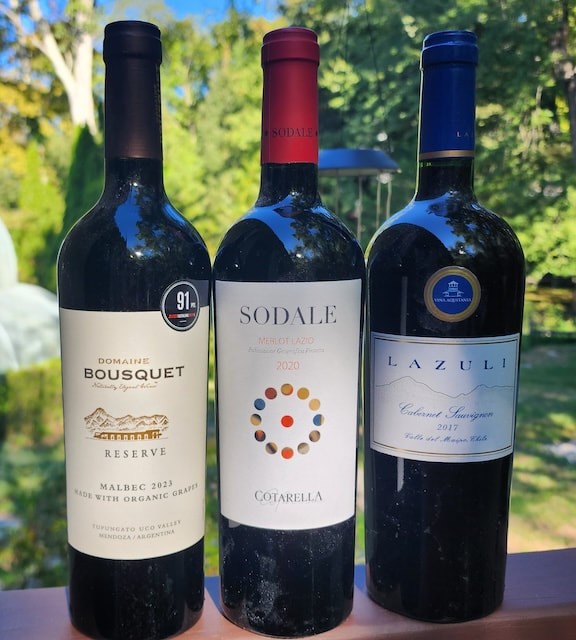
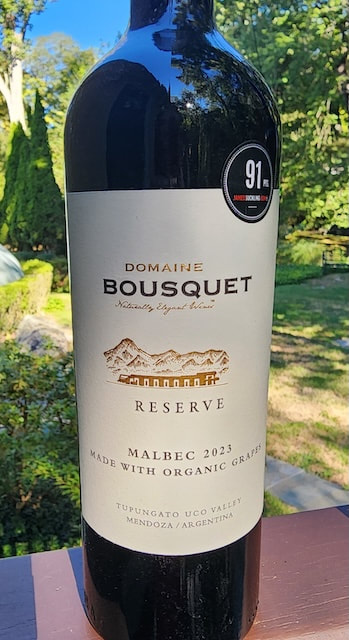
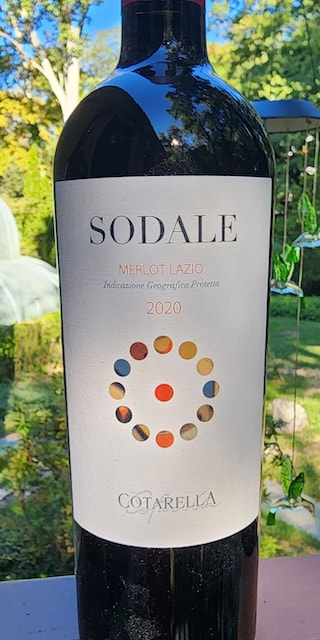
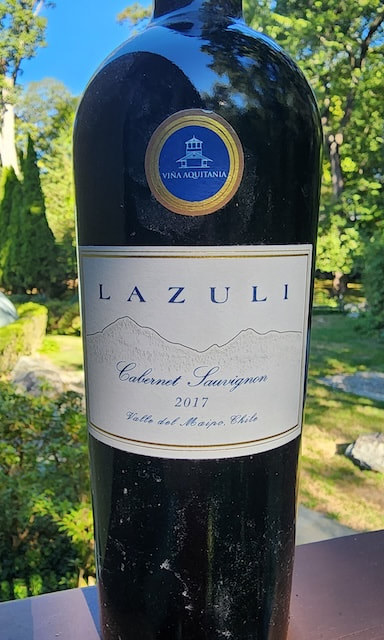
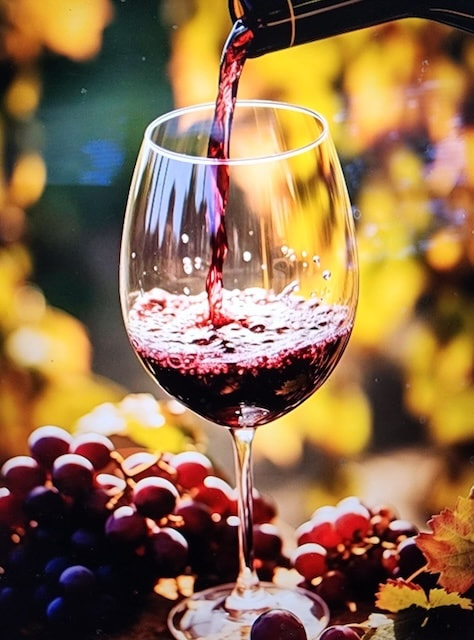








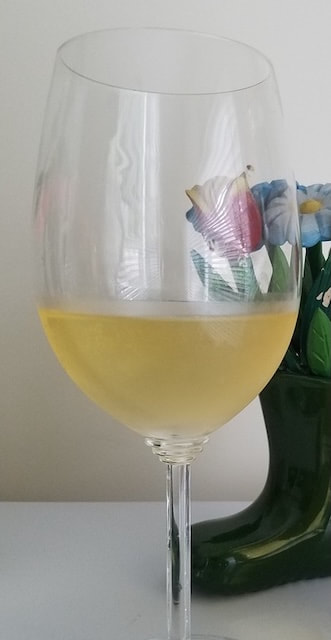
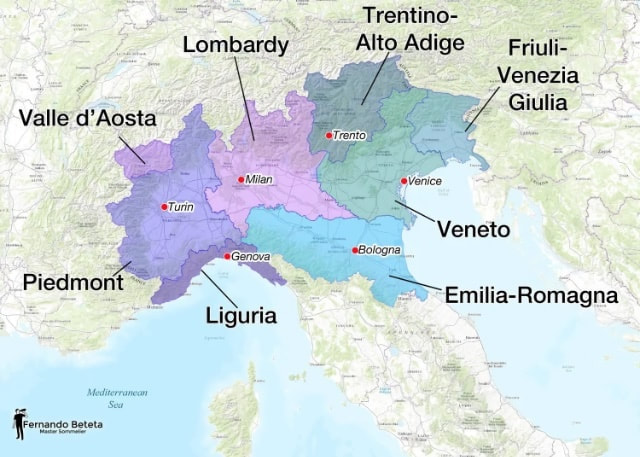
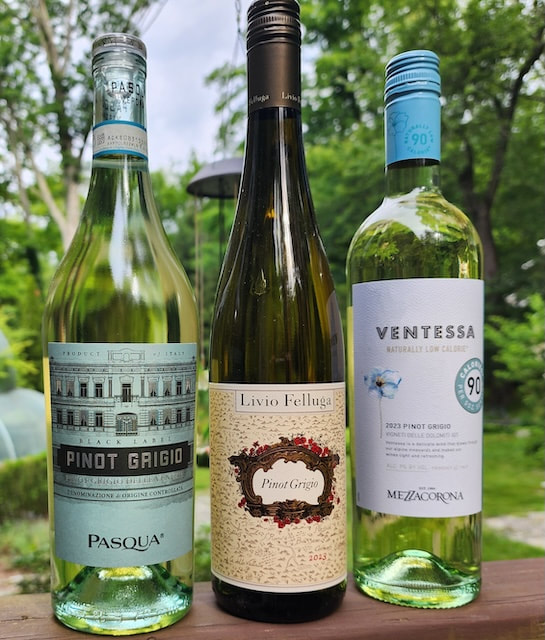
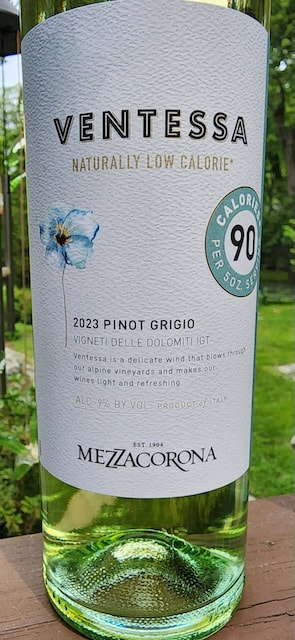
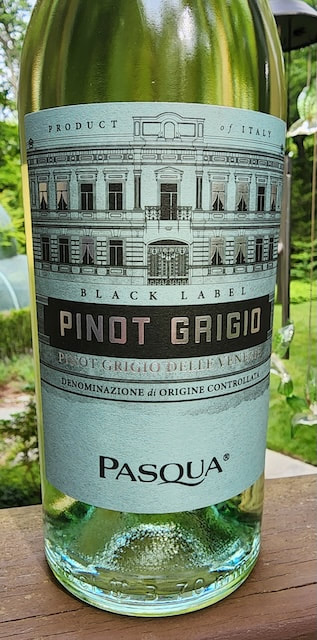
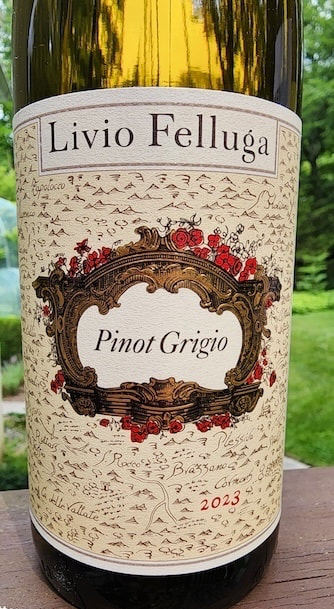
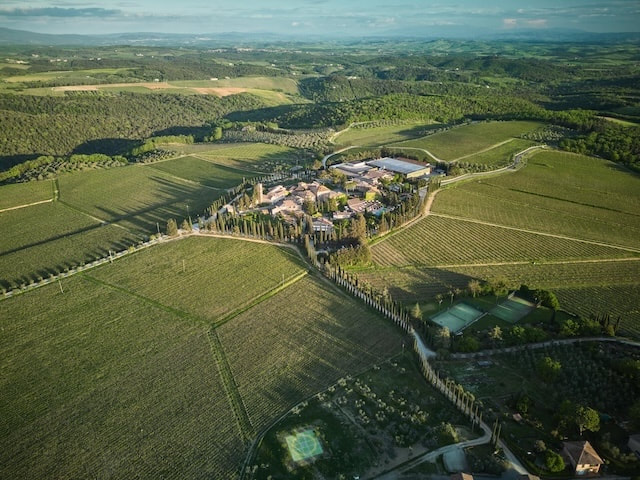

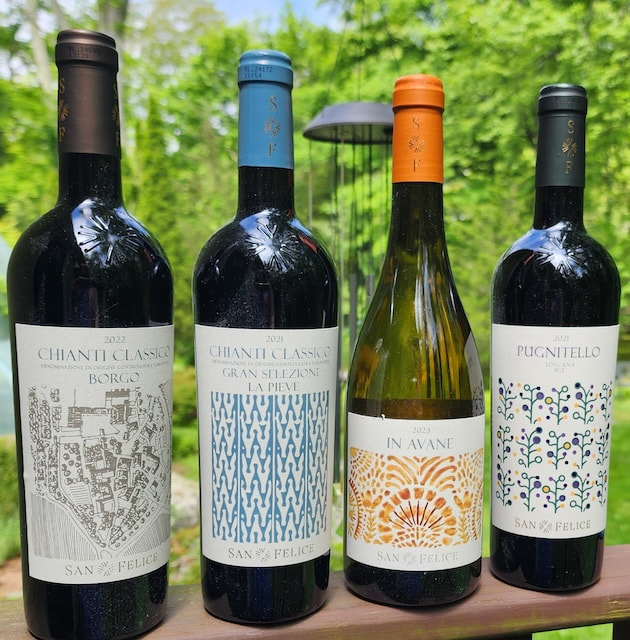
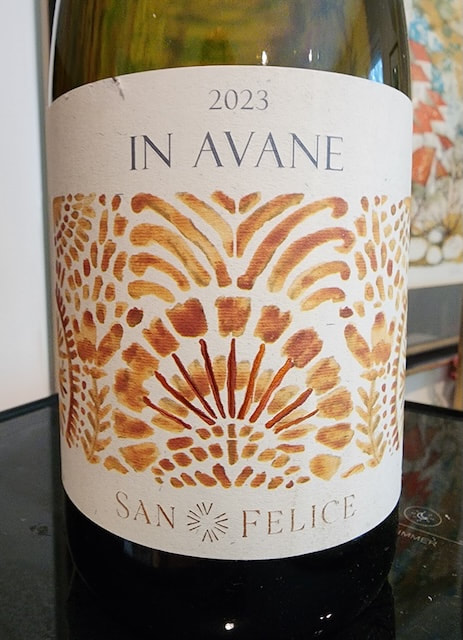
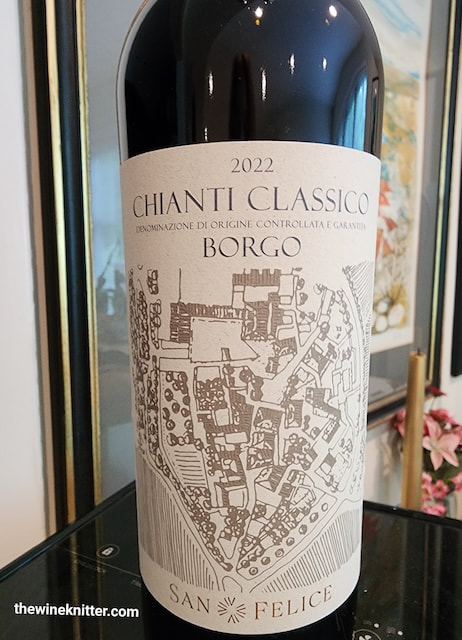
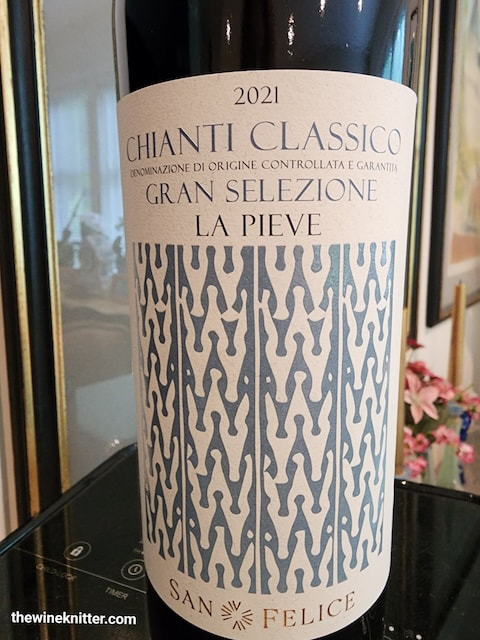
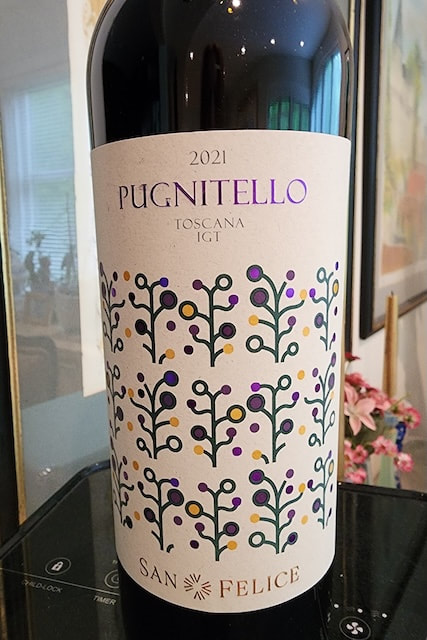
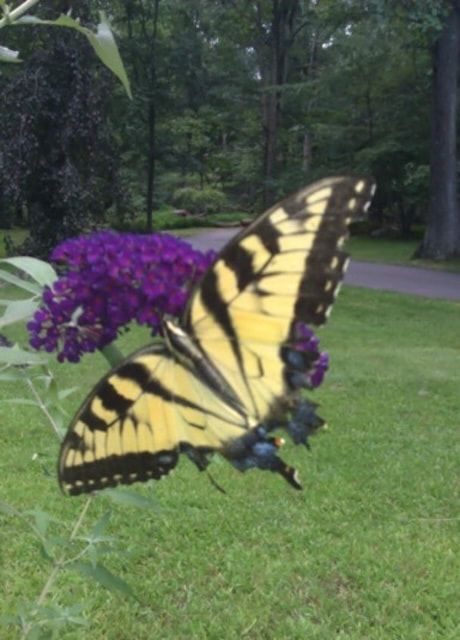
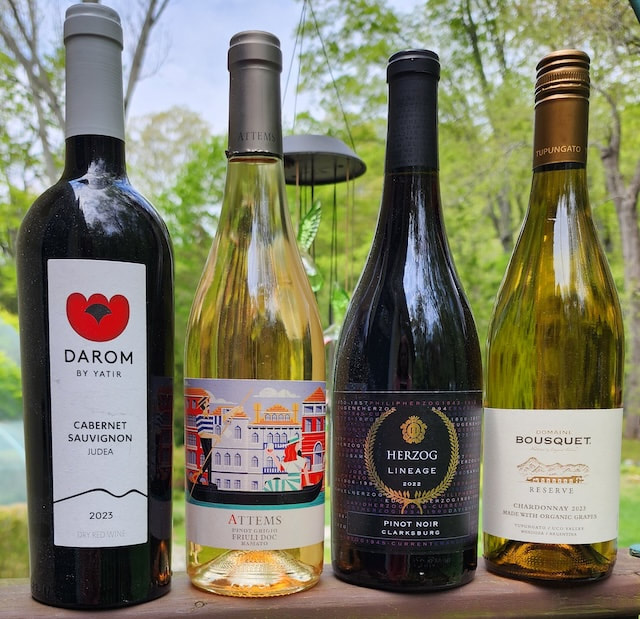
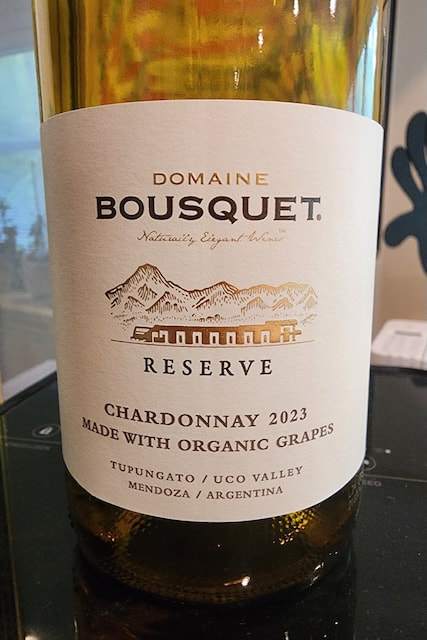
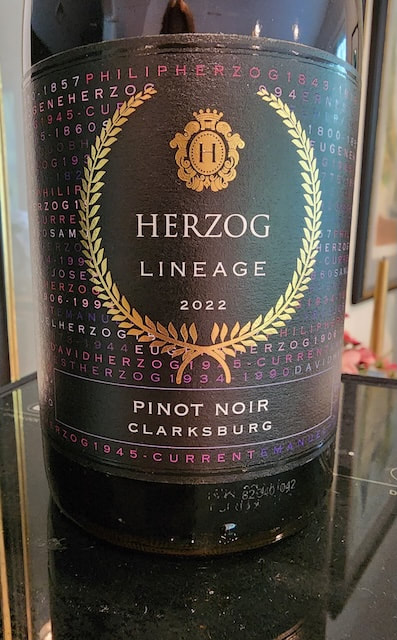
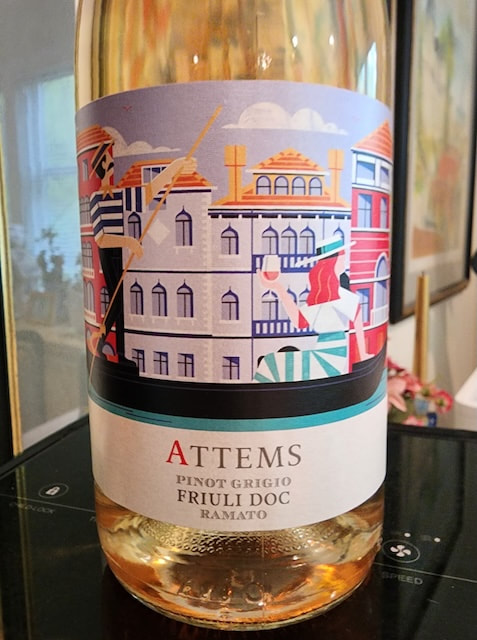
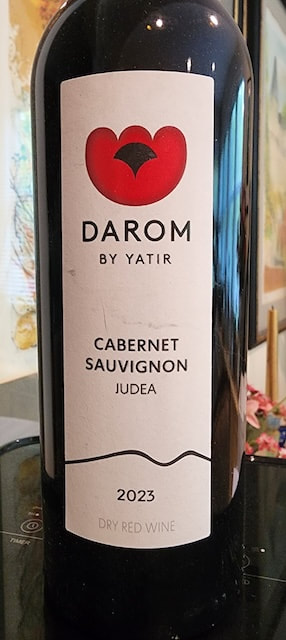
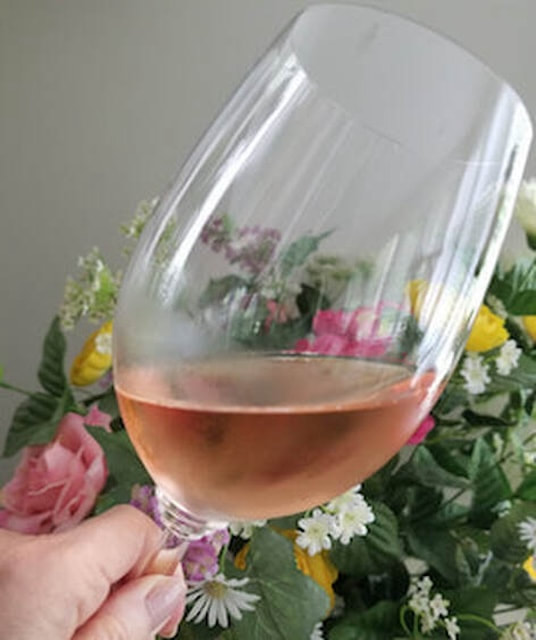
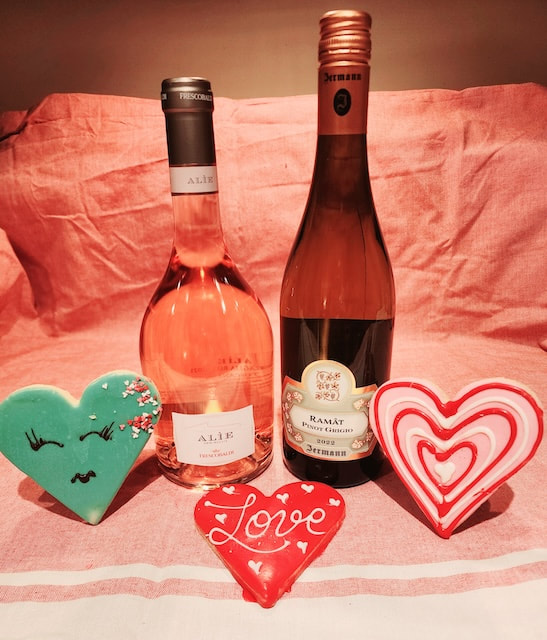
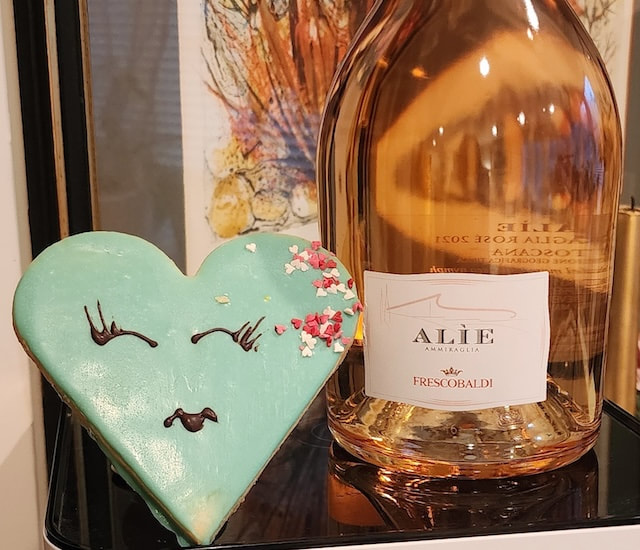
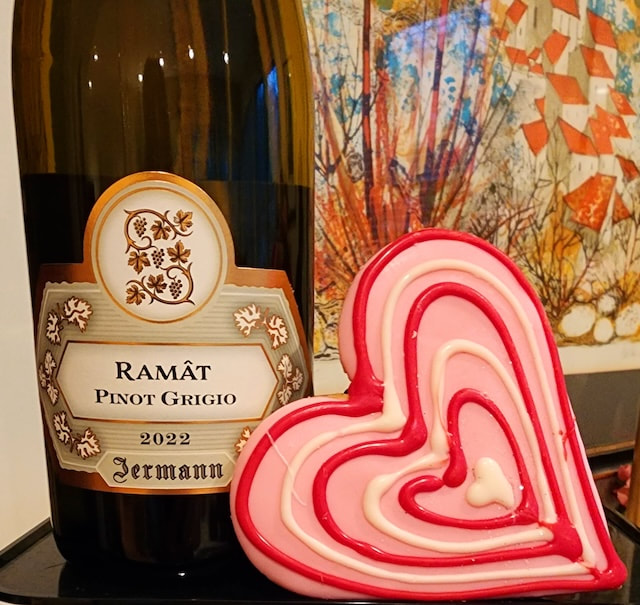
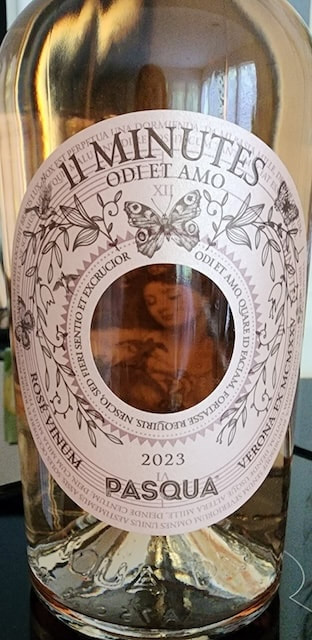
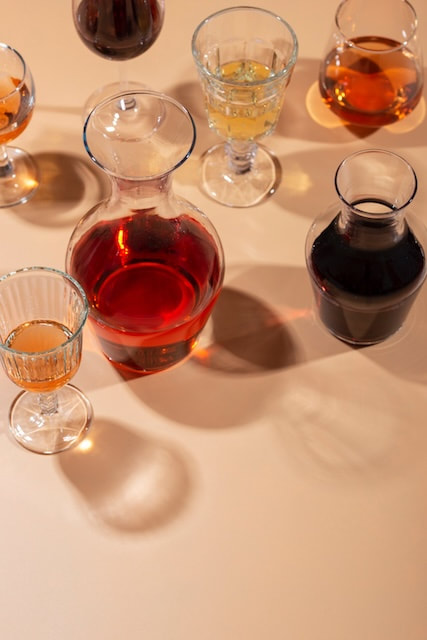
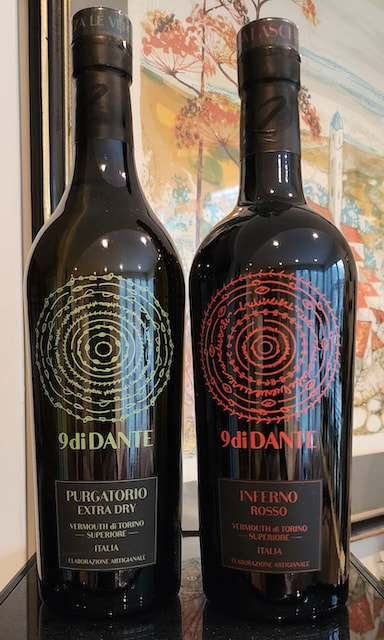
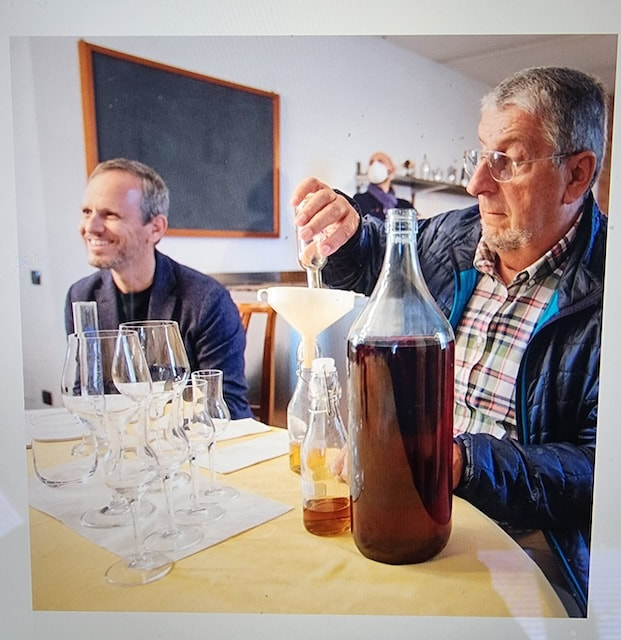
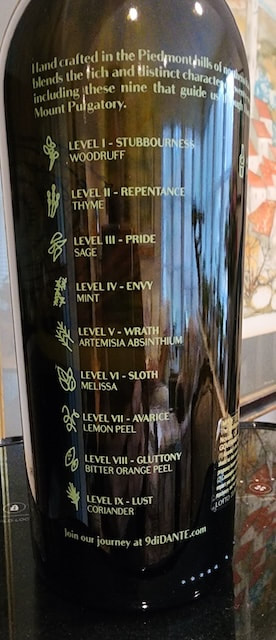
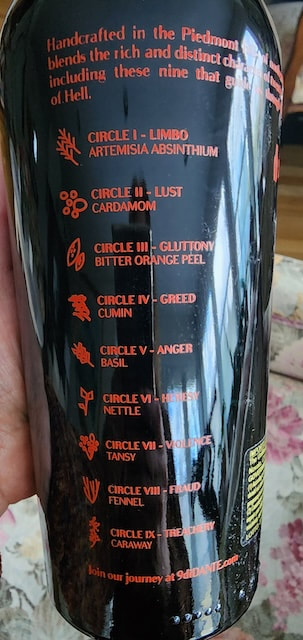
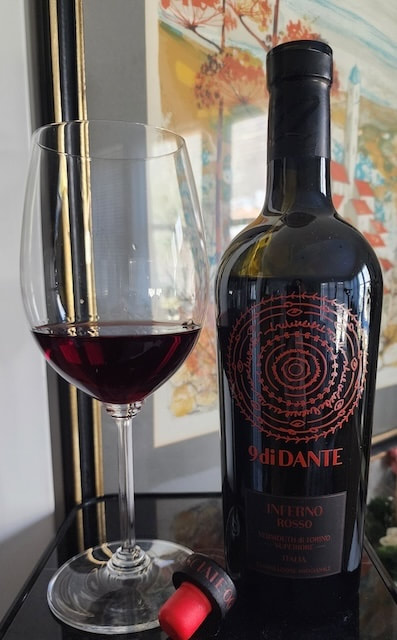
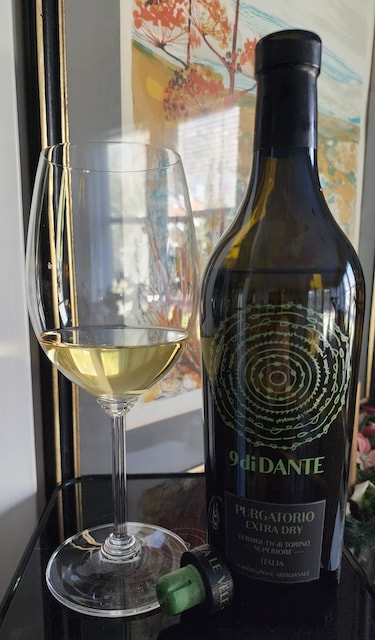
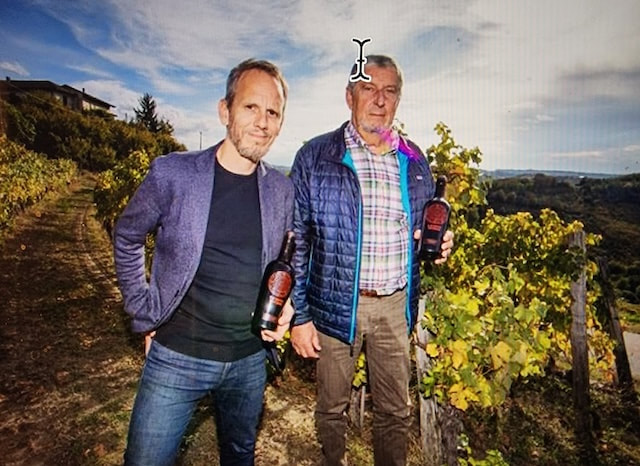
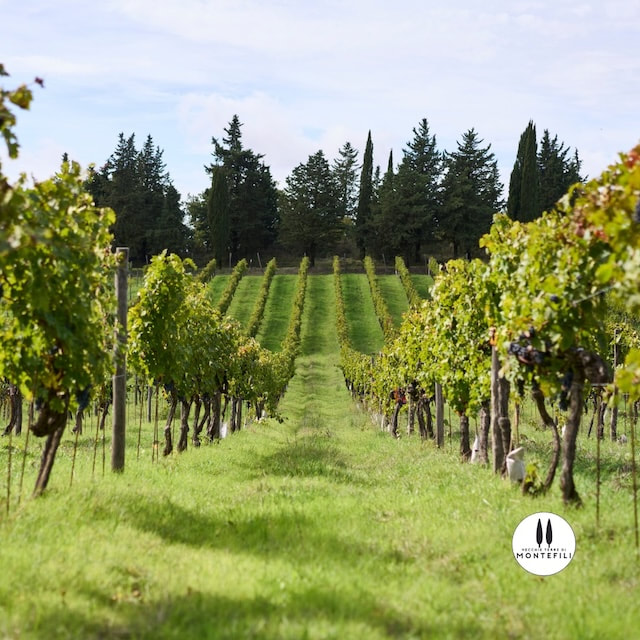
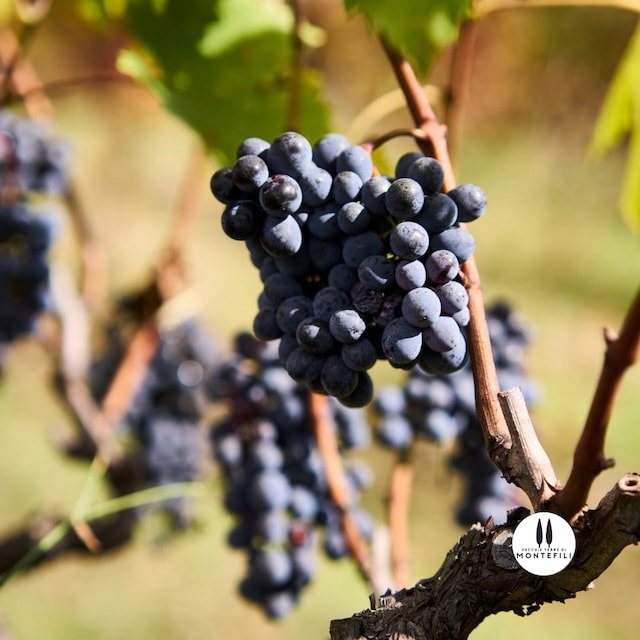
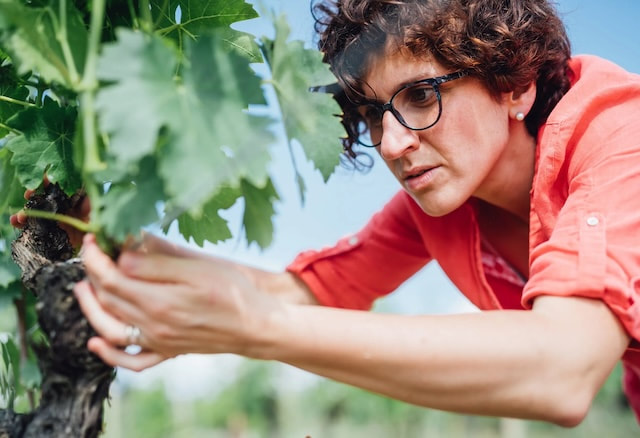
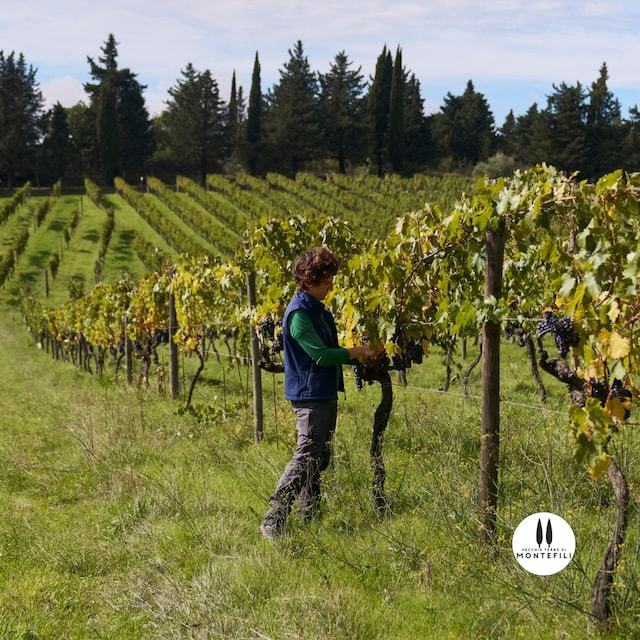
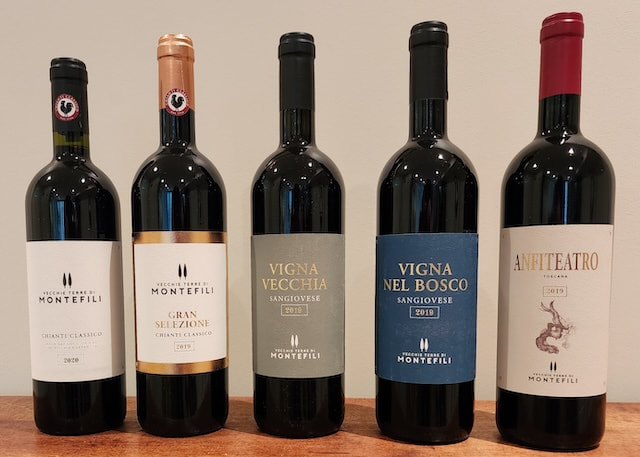







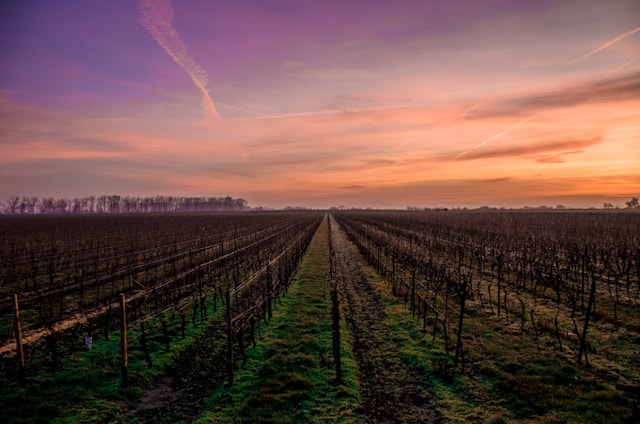
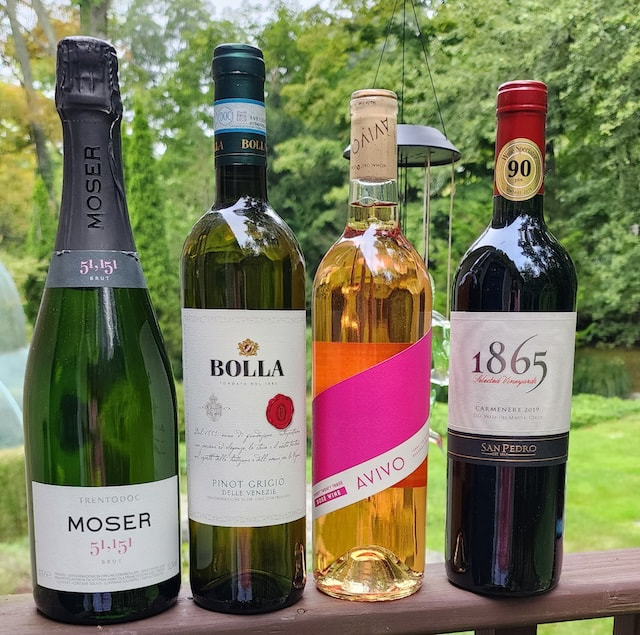
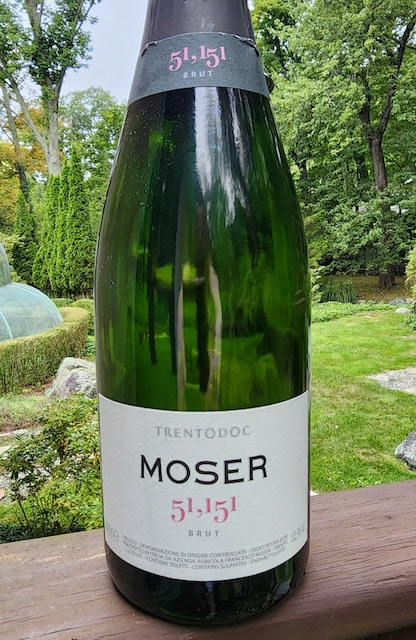

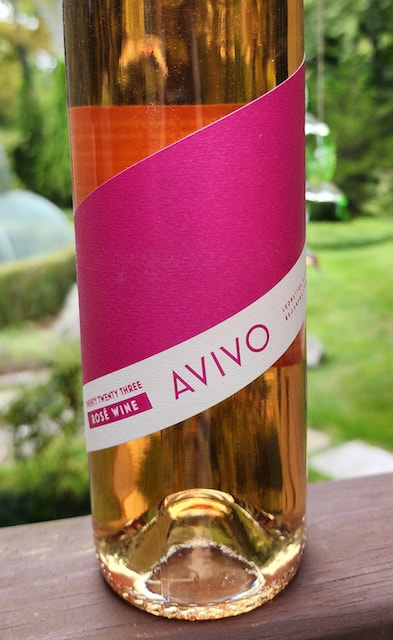
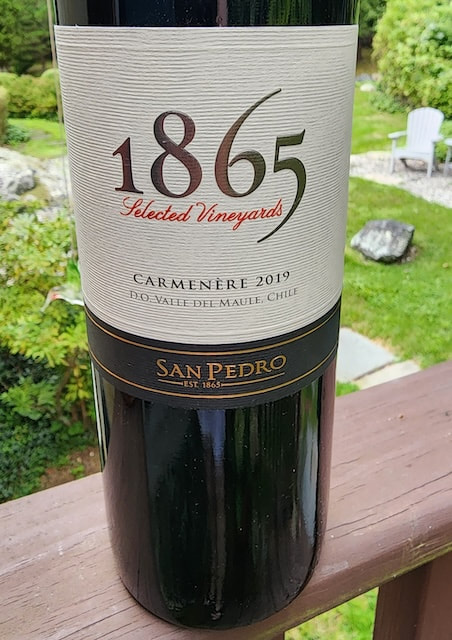
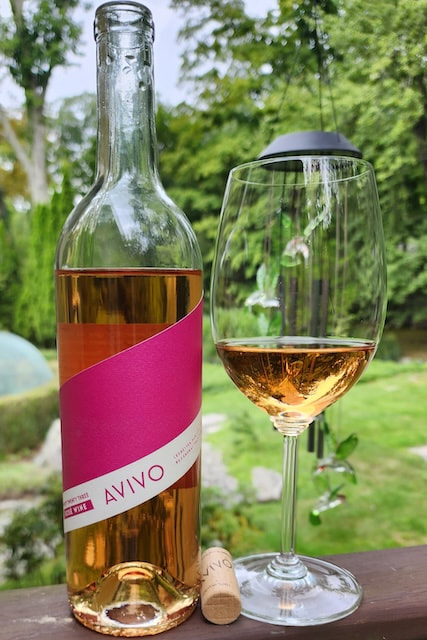
 RSS Feed
RSS Feed